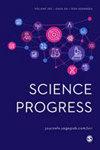利用基于神经网络的模型识别番茄植株的早疫病和晚疫病,提高农业生产力
IF 2.6
4区 综合性期刊
Q2 MULTIDISCIPLINARY SCIENCES
引用次数: 0
摘要
计算机先进技术对各个领域都有重大影响。人们普遍认识到,病害会对作物产量产生不利影响,并对经济产生重大影响,尤其是在农业国家。在经济作物中,番茄的经济重要性仅次于马铃薯。在全球范围内,番茄的年产量达到了惊人的 1.6 亿吨,这使得番茄对农业发展更加重要。遗憾的是,番茄作物容易受到多种病害的侵袭,其中早疫病和晚疫病是导致番茄减产约 79% 的两大罪魁祸首。传统的病害检测和识别方法耗时长、成本高、破坏性大,通常需要病理学家的专业知识。因此,研究的主要目标是利用深度学习技术提高病害识别的准确性。我们设计了一个基于 inception-V3 架构的模型,用于对影响番茄植株叶片的病害进行分类。该模型使用 PlantVillage 数据集进行了训练和测试,该数据集由 6000 张番茄叶片样本图像组成。训练和测试过程的比例为 80:20,结果是所提模型的分类准确率达到了令人印象深刻的 97.44%。所提出的解决方案旨在通过减轻番茄叶片病害的影响,使番茄产业在全球市场上蓬勃发展。通过减少这些病害的流行,该解决方案可以增加需求,促进行业发展。本文章由计算机程序翻译,如有差异,请以英文原文为准。
Early and late blight disease identification in tomato plants using a neural network-based model to augmenting agricultural productivity
Computer-advanced technologies have a significant impact across various fields. It is widely recognized that diseases have a detrimental effect on crop productivity and can significantly impact the economy, particularly in agricultural countries. Tomatoes hold great economic importance among cash crops, second only to potatoes. Globally, tomato production reaches a staggering 160 million tons annually, making it even more crucial for agricultural development. Unfortunately, the tomato crop is susceptible to several diseases, with early blight and late blight as two prominent culprits responsible for a production decrease of around 79%. Traditional disease detection and identification methods are time-consuming, expensive, and destructive, often requiring pathologists’ expertise. Thus, the primary research objective is to enhance disease identification accuracy by leveraging deep learning techniques. A model based on the inception-V3 architecture has been devised to classify diseases affecting tomato plant leaves. The model was trained and tested using the PlantVillage dataset, which comprises 6000 sample images of tomato leaves. The training and testing process utilized an 80 : 20 ratio, resulting in an impressive classification accuracy of 97.44% for the proposed model. The proposed solution aims to enable the tomato industry to thrive in the global market by mitigating the impact of tomato leaf diseases. By reducing the prevalence of these diseases, the solution can increase demand and contribute to the industry’s growth.
求助全文
通过发布文献求助,成功后即可免费获取论文全文。
去求助
来源期刊

Science Progress
Multidisciplinary-Multidisciplinary
CiteScore
3.80
自引率
0.00%
发文量
119
期刊介绍:
Science Progress has for over 100 years been a highly regarded review publication in science, technology and medicine. Its objective is to excite the readers'' interest in areas with which they may not be fully familiar but which could facilitate their interest, or even activity, in a cognate field.
 求助内容:
求助内容: 应助结果提醒方式:
应助结果提醒方式:


